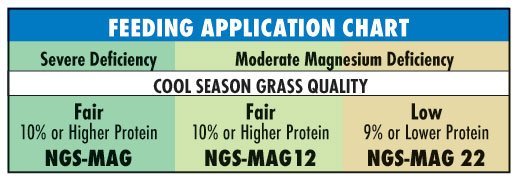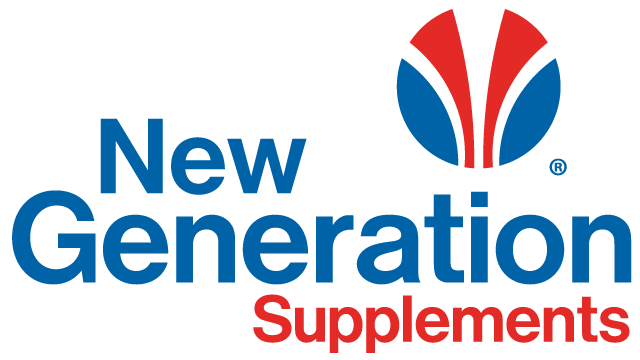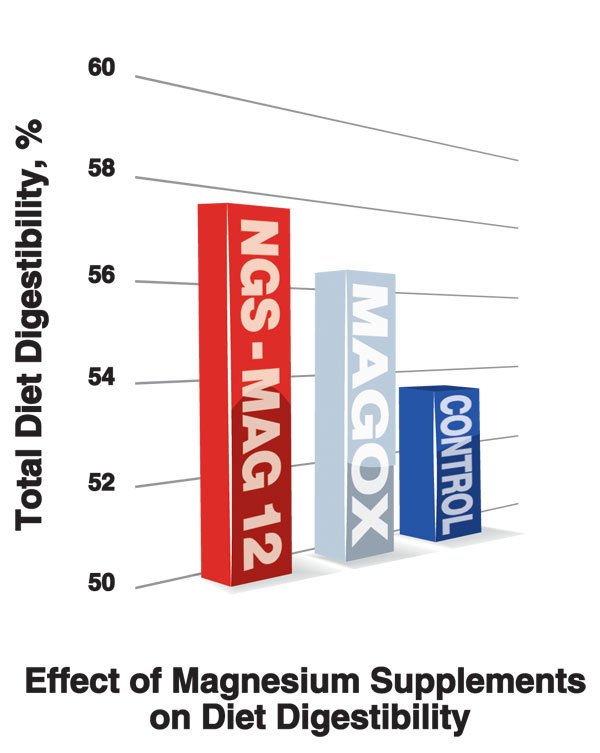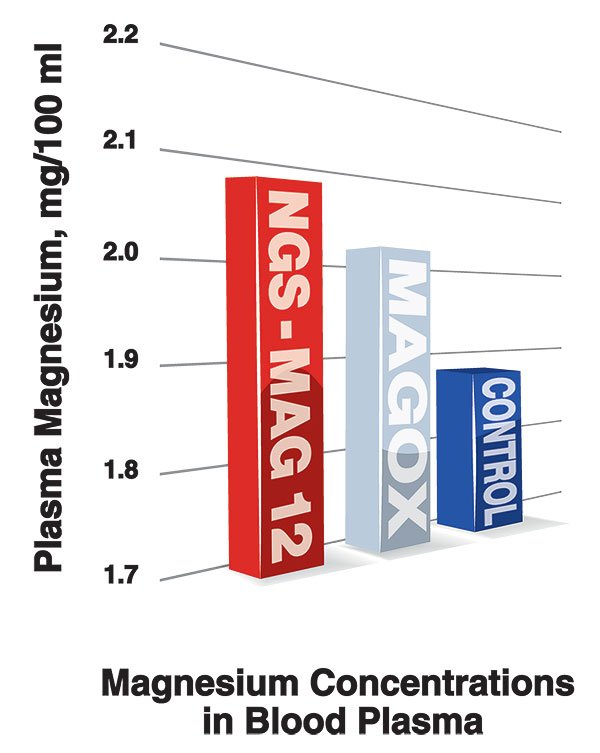Meeting Magnesium Requirements of Forage-fed Cattle
Magnesium is an essential nutrient for all animals. Mild deficiencies can result in reduced feed intake, poor diet digestion, and bone abnormalities. More severe deficiencies can cause a serious metabolic disorder known as “Grass Tetany.” Providing a palatable magnesium supplement with high biological availability is an effective strategy for meeting magnesium requirements of grazing cattle.
Magnesium Trial:
Supplemental Sources Of Magnesium
An experiment was recently conducted at Kansas State University to evaluate magnesium oxide as a supplemental source of magnesium when fed in a dry supplement or when added to NGS-Mag 12 blocks from New Generation Supplements. Six steers averaging 675 lbs. were placed into metabolism crates equipped with urine collection funnels. A total of three treatments were used: CONTROL (no supplemental magnesium); MAGOX (magnesium oxide combined with ground corn and molasses); NGS-Mag 12 (NGS -Mag 12 block). Two steers were allocated to each of the three treatment groups. The study was repeated three times, exposing each animal to each of the three dietary treatments.
The identical source of magnesium oxide was used to make NGS-Mag 12 blocks and the MAGOX supplement. NGS-Mag 12 blocks contained 12% crude protein and 2% magnesium. The MAGOX supplement was a mixture of 15% molasses, 26% magnesium oxide, and 59% ground corn, and contained 14.4% magnesium. NGS-Mag 12 blocks were offered to cattle continuously.
The MAGOX supplement was fed in sufficient amounts to provide the identical level of magnesium provided by the NGS-Mag 12 blocks. All steers were fed free-choice brome hay (10.0% crude protein; 0.14% magnesium) for a 7-day adaptation period. Records of daily forage consumption, fecal output and urine output were maintained throughout a 4-day collection period.
Total urine output was measured at 6-hour intervals, and a sample of urine was retained from each interval for determination of magnesium concentration. Total feed intake and fecal output were determined at 24-hour intervals for the 4-day collection phase. Finally, a sample of blood was taken from each animal daily for determination of blood plasma magnesium concentrations.
Results:
Total Magnesium Intake Improves With NGS Supplements
Steers fed the NGS-Mag 12 blocks consumed an average of 1.03 pounds of block per head daily. Hay consumption was not impacted by feeding either type of magnesium supplement, but dry matter digestibility was slightly higher with MAGOX compared to the CONTROL, and about 6% greater for steers fed the NGS-Mag 12 block compared to CONTROL. (See figure 1.)
Total magnesium intake was tripled by feeding either type of supplement (19 grams/day for controls compared to 59 grams/day for supplemented groups). Availability of the magnesium from either supplement was above 50%. Urinary excretion of magnesium was substantially greater for cattle fed the MAGOX treatment than for the NGS-Mag 12 block or the CONTROL treatment. Additionally, urinary excretion of magnesium was more erratic for cattle fed the MAGOX supplement compared to cattle consuming identical levels in the form of a block.
Blood plasma concentrations of magnesium were significantly higher for cattle fed the NGS-Mag 12 block in comparison to CONTROL, and were intermediate when cattle were fed the MAGOX treatment. (See figure 2.)
Higher plasma concentrations of magnesium combined with lower urinary output and comparable fecal outputs of magnesium suggest that magnesium oxide is utilized more effectively when incorporated into NGS-Mag 12 blocks in comparison to feeding in a dry meal supplement. (See figure 3.) This is attributed to the fact that cattle consume blocks throughout the day, delivering small but uniform increments of essential nutrients. Alternatively, meal supplements tend to be consumed in a relatively short period of time, thereby causing nutrients to be excreted through the urine when they are present in excess.

Supplements from New Generation Supplements are designed to address deficient pastures and help producers become more efficient and profitable.





